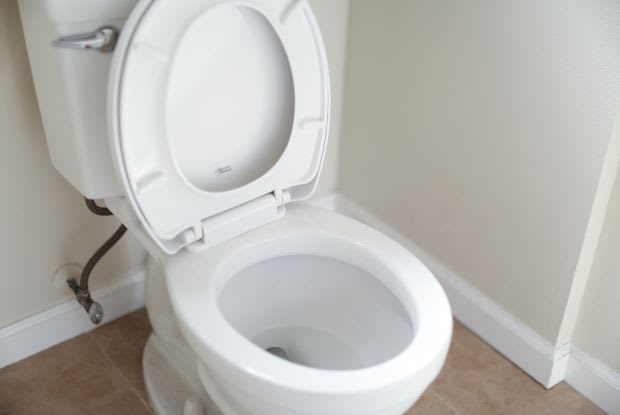Table of Contents
II. Symptoms of Gastric Motility Disorders
III. Types of Gastric Motility Disorders
IV. Diagnosing Motility Disorders
What is Gastric Motility?
The stomach performs several functions to ensure the proper digestion of the food we eat. For digestion to work normally, the food must move through the digestive tract through a process called peristalsis.
The digestive system is made up of connective tissue that contains larger blood vessels, lymph vessels, nerve cells, and fibers. The stomach is made of three layers of muscles, and these muscles help push food and liquids through the digestive tract. [1]
This movement is known as gastric motility, and several disorders may occur if this process is disrupted or not functioning correctly. Typically, the muscle layers of the wall will contract and relax in a coordinated fashion to propel food from the esophagus to the stomach. From the stomach, gastric motility will push the food from the intestine to the anus.
Motility disorders occur when the digestive tract cannot move food properly through the body. If diagnosed with a motility disorder, your doctor may prescribe anti-nausea medications to prevent symptoms. Reglan (metoclopramide) and Zofran may be prescribed to assist in symptoms of nausea and vomiting that are common in gastric motility disorders. Motilium (domperidone) is not available in the United States for gastric issues, but your doctor may recommend getting domperidone through a Canadian pharmacy like Canada Pharmacy Depot. Read on to learn more about these digestive disorders. There are several types of gastric motility disorders, but the following general symptoms may signify a problem with your digestive tract. Common symptoms include: There are dozens of conditions that may affect the digestive system, and many of them cause motility disorders. Each type of gastric motility disorder has its own risk factors and symptoms, and your doctor will put a treatment plan together after a proper diagnosis. Gastroparesis occurs when the stomach is slow to empty itself. This condition is usually related to nerve damage in the stomach muscles, creating several unpleasant symptoms. The vagus nerve controls food movement through the digestive tract, and if the nerve is damaged, the stomach muscles and intestines will not work normally. You may experience belching, bloating, heartburn, and indigestion. High blood glucose levels caused by diabetes may damage the vagus nerve, so this condition is more common in people with type 1 and type 2 diabetes. Anywhere from 20 to 50 percent of diabetes patients have gastroparesis. [4] IBS is a functional stomach problem, which means that the symptoms cannot be explained by structural or tissue abnormality. The colon muscles (part of the large intestine) are sensitive to certain triggers, usually caused by certain foods or liquids. The exact cause of IBS is not known, but there are several medications available to treat symptoms. IBS cannot be cured and is often a lifelong disorder. IBS typically runs in the family and may be caused by gene mutations. [5] Hirschsprung’s is a genetic disorder that leads to poor digestive motility. Around one in 5,000 babies are born with this condition. This disease is characterized by a lack of nerve cells at the end of the colon and rectum. Without these cells, the stomach cannot push food through the digestive tract properly, putting people at risk of intestinal blockages. Researchers have found that men are more likely to have this disorder than women. Common symptoms of Hirschsprung’s include poor weight gain, abdominal distension, and vomiting. [6] Achalasia is a disorder of the esophagus that makes it difficult to push food down towards the stomach. This is caused by a failure in the muscle at the bottom of the esophagus, known as the lower esophageal sphincter (LES). If the LES is not working properly, it cannot contract and relax properly to move food through the tube. Symptoms of this condition appear gradually, and difficulty swallowing is usually the first symptom. [3] If you notice a difference in your digestive system, you may want to seek the advice of a gastroenterologist. They will likely perform a physical examination and take down a detailed medical history. If your doctor believes that you are experiencing a gastric motility disorder, they may recommend the following tests: X-rays: An x-ray can determine if your stomach is distended and identify any blockage in the intestines. The doctor will let you know if your stomach distension is caused by gas or stool in the rectum. Endoscopy: This is a non-surgical procedure that can help doctors examine someone’s digestive tract. An endoscope is a flexible tube with a light and camera attached to it. An upper endoscopy involves your doctor inserting the endoscope through the mouth into the esophagus, giving a view of the stomach and upper part of the intestine. Your gastroenterologist may do a colonoscopy through the rectum to examine the lower intestine. Sitzmark study: This test involves swallowing small rings. Once these rings are swallowed, you will get an x-ray five days later to see where the rings are located in the digestive tract. This allows your doctor to determine how your intestines are working. [4] As mentioned above, many motility disorders like IBS and gastroparesis are chronic and cannot be cured. Luckily, there are several medications available to keep your condition under control. Motilium (domperidone) is a useful drug for those with gastroparesis, chronic constipation, GERD, and other upper GI symptoms. This drug is an anti-sickness medicine that can help symptoms of nausea or vomiting. Because it is not available in the United States for gastric use, talk to your doctor about getting a domperidone prescription through Canada Pharmacy Depot. Metaclopromide works similarly to treat nausea and vomiting in diabetic gastroparesis and GERD. This drug is a dopamine antagonist that blocks dopamine receptors, preventing unpleasant nausea symptoms. You may also be prescribed Zofran (ondansetron) to block the action of chemicals in the body that trigger nausea. [5] Along with these medications, you may need to alter your diet to ensure that certain foods you consume are not triggering your stomach problems. You may want to eat foods low in fat and fiber and chew your food thoroughly. Your doctor will let you know which foods may be triggering your motility disorder. [6] The content provided in this article is based on thorough research and in some cases, reviewed by a medical professional. Our goal for the information is to provide helpful, general health informational. It is not intended as a substitute for professional medical advice.
Symptoms of Gastric Motility Disorders
Types of Gastric Motility Disorders
a. Gastroparesis
b. Irritable Bowel Syndrome (IBS)
c. Hirschsprung’s Disease

d. Achalasia
Diagnosing Motility Disorders

How are the different Gastric Motility Disorders treated?
